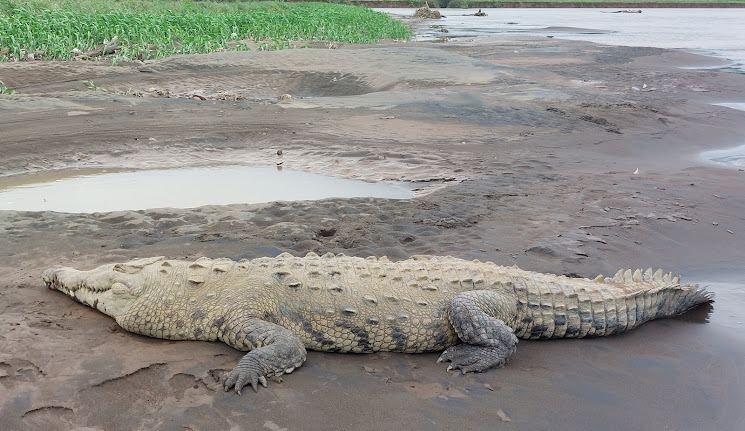Jungle Crocodile Safari

Jungle Crocodile Safari
We were on the Tarcoles River, Costa Rica. We had a tour by Jungle Crocodile Safari
which gave us the opportunity to observe American Crocodiles, with sizes over four meters
long, iguanas and basilisks in their natural environment, along with more than a hundred
twenty different species of resident and migratory, terrestrial and coastal birds.
Our guides offering wide educational information on the crocodiles and the ecology of
this wonderful natural refuge, while facilitating us the opportunity to photograph and
film the wild life at a very short distance.
Everyone one was excited about how close we were to the Crocodiles. Some were hugh.
Alligators and crocodiles are both large, lizard-shaped reptiles with powerful bites,
but they have some key differences, including:
Snout shape
Alligators have a broader, rounded snout with a U-shape, while crocodiles have a
narrower, more pointed snout with a V-shape.
Jawline
Alligators have a wider upper jaw, so their teeth are mostly hidden when their mouths
are closed. Crocodiles have upper and lower jaws that are more or less the same size.
Color
Alligators are usually dark green, gray, or black, while crocodiles are more grayish-green
or olive.
Habitat
Alligators are typically found in freshwater habitats, while crocodiles are usually found
in coastal, brackish, and salt-water habitats.
Behavior
Crocodiles are typically more aggressive than alligators.
Bite strength
Crocodiles tend to have a stronger bite than alligators. For example, the Nile crocodile's
bite is 5,000 pounds per square inch (psi), while an American alligator's bite is 2,125 psi.
For comparison, a human's bite force is about 162 psi.
Speed
Full-grown crocodiles can reach top land speeds of 15 to 22 miles per hour.

![[Return]](https://www.tomjfisher.com/Travel/ar1re_lt.gif)

![[Return]](https://www.tomjfisher.com/Travel/ar1re_lt.gif)